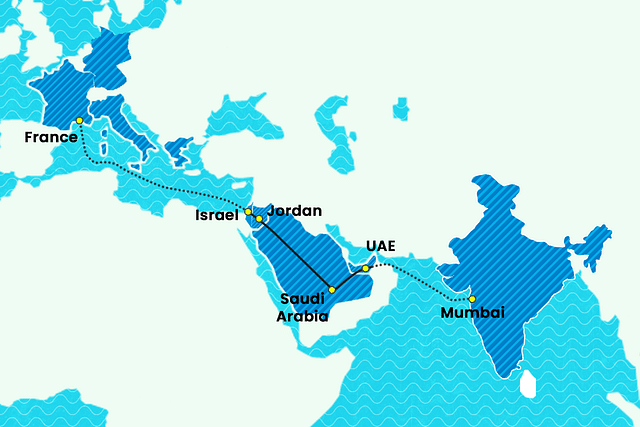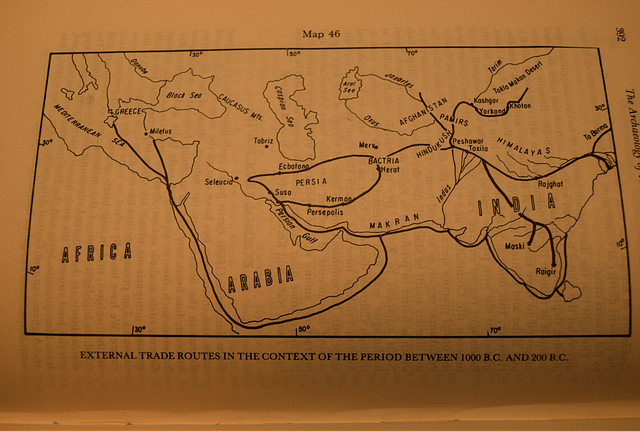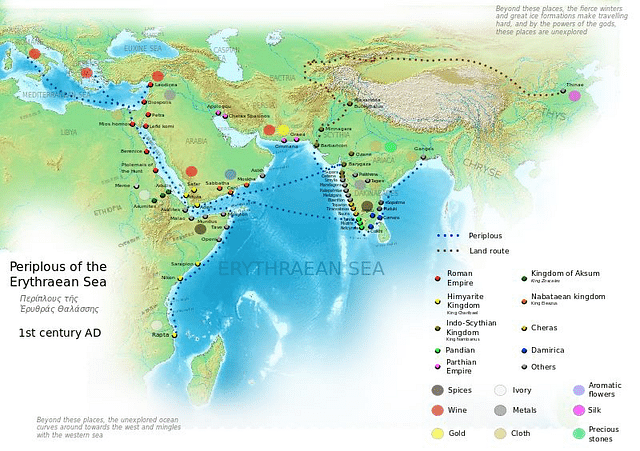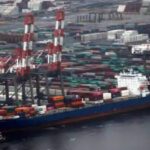
As a historian of the past and an observer of current affairs, the events of the past few days mark the turning of the wheel of time for me. The chakra has turned and how!
It is a time of revival and re-awakening of Bhartiya civilization, long in slumber, which will have a profound global effect on the 21st century of the common era.
I write in the context of the India-Middle East-Europe Economic Corridor (IMEC) which was announced at the G20 Leaders Event on the Partnership for Global Infrastructure and Investment on 9 September.
This is being seen as a response to the failing but globally ambitious Belt and Road Initiative of China.
Through this China had sought to bind countries across the world in exploitative and iniquitous infrastructure deals which have become deadly debt traps. IMEC is a strong riposte and alternative vision of global infrastructure.
The governments of Saudi Arabia, the European Union, India, the UAE, France, Germany, Italy and the United States of America have committed to work together to establish the India-Middle East-Europe Economic Corridor (IMEC).
The IMEC is expected to stimulate economic development through enhanced connectivity and economic integration between Asia, the Arabian Gulf, and Europe.
The IMEC will comprise two separate corridors, the east corridor connecting India to the Arabian Gulf and the northern corridor connecting the Arabian Gulf to Europe.
It will include a railway line that, upon completion, will provide a reliable and cost-effective cross-border ship-to-rail transit network to supplement existing maritime and road transport routes – enabling goods and services to transit to, from, and between India, the UAE, Saudi Arabia, Jordan, Israel, and Europe.

The White House communique reads as follows: “Through the India-Middle East-Europe Economic Corridor, we aim to usher in a new era of connectivity with a railway, linked through ports connecting Europe, the Middle East, and Asia.” ( emphasis mine)
New?
This is one of the oldest trading routes on record. Go back a few thousand years, when the Mauryans were on the throne of Pataliputra and it was one of the two largest and most important empires in the world, the other being the Seleucids or the inheritors of the Alexandrian Greek Empire.
They met and clashed on the banks of the Kabul or Kubha River in what is now Afghanistan because of a dispute exactly over these trade routes connecting India to the Gulf and beyond.
The issue was finally resolved through a treaty: 500 elephants to the Seleucids, Chandragupta’s marriage to the daughter of Seleucus and concession of parts of modern Pakistan and Afghanistan to the Mauryans.
This, if I may use a modern metaphor, turbo-started international trade with the Indian Ocean littoral as the focus.
Look at the maps below.

Map 2 is a representation of the situation as it existed around 200 BCE i.e around Mauryan times and is taken from a seminal study of Bhartiya Trade Routes by Nayanjot Lahiri. Note the importance of the Gulf and Red Sea routes as a via media to Europe.

Map 3 is a representation of a navigational map based on The Periplus Maris Erythraei (or ‘Voyage around the Erythraean Sea’) which is an anonymous work from around the middle of the first century CE written by a Greek speaking Egyptian merchant. The Red Sea route and Gulf figure prominently again , as they do in the IMEC.
Both are illustrations of the great trade routes of the 1st millennium BCE and the 1st millennium CE.
If you compare Map 1 with Maps 2 and 3 you can see the durability and seminal significance of India’s western sea route to the Gulf and then Europe. Note once more how it focuses on the Indian Ocean Littoral.
Bharat’s engagement with the world, especially the Greco Roman world was mediated through Mesopotamia , Syria and the Mediterranean .
India.
India was at the centre of a comprehensive trade flow which starts from China and Russia and ends up in Europe straddling the world from ancient times.
Significantly, the EAM, Dr S. Jaishankar, in an interview with India Today spoke of these trade routes as historical, from the times of the Mauryans and their blockage after the fall of Constantinople. He also spoke of the European efforts to reach India , the center of these trade routes and the impact of these efforts on the world.
These efforts moulded the world into colonies within a paradigm of exploitation and impoverishing of large swathes of the world.
The significance of the revival of this trade route is that it harks back to a time when the share of Bharat in World GDP was 32 per cent, it became four per cent after the British had impoverished India i.e. the 20th century. Through the Nehruvian years it fell further, it is now only around 3 per cent.
The locus of world trade and economic affairs shifted from the Indian ocean littoral to the Atlantic Ocean. Europe and North American relations defined it, with a nod to the petrol interests after this fuel became the blood in the veins of the world.
India suffered and was sidelined. India’s contribution to world GDP, its contribution to international trade flows was in long term decline across the second millennium CE, through the Islamic invasion and drain of wealth during colonisation.
The IMEC seeks to build rail infrastructure and ports to have a seamless ship to rail route for goods. Along with this will be digital networks, hydrogen pipelines and electric cables; both clean energy and communications. India can export expertise, goods and services.
Make in India is an ongoing project, Production Linked Incentives and Atma Nirbhar Bharat are being pushed by India to make itself a manufacturing powerhouse. Services export from India is one of its strengths. Ideas and implementation of Digital Public Infrastructure will be one of India’s key exports to the world.
India is already an engine of global growth , IMF estimates 15 per cent of global growth will be powered by India in 2023. Going forward, there could even be a jump in private investment needed to realize long term growth dreams and objectives.
Can this IMEC be a harbinger to a recovery of Indian economic place in the world, can we look to a time when India contributes a third to world gross domestic product?
Time will be the judge; and a serious effort to maximize our resources, both human and material.


